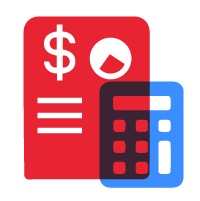Across industries, the challenges of scalability, workforce optimization, and operational costs continue to pressure companies to evolve their business models. Traditional employment structures, once the cornerstone of stability, now contend with shifting expectations driven by technology, flexible labor, and project-based demands. Executives and entrepreneurs face unprecedented choices on how to balance agility with long-term sustainability while maintaining quality and efficiency in operations.
Global business leaders increasingly turn to flexible staffing and talent-as-a-service models to enhance performance and control overhead. This emerging shift is embodied in the gig economy—where individuals offer specialized services on demand, and organizations access skilled labor at scale without long-term commitments. Designed for decision-makers exploring modern labor models and outsourcing strategies, this discussion explores the most relevant examples of the gig economy that shape how enterprises operate globally.

What is Gig Economy and Its Impact on Businesses
The gig economy refers to a labor ecosystem driven by short-term contracts, freelance engagements, and on-demand services facilitated by digital platforms. Instead of permanent full-time roles, professionals and companies engage on flexible terms, typically task or project-specific. This model enables businesses to address fluctuating demand curves, access niche expertise, and minimize fixed labor costs. For workers, it delivers freedom, multiple income streams, and the ability to operate independently through platforms like Upwork, Fiverr, and Toptal.
Business leaders recognize the gig economy as a transformative force in global workforce management. It enables companies to scale service delivery without the traditional recruitment or infrastructure burden. For instance, tech startups in the United States often hire freelance developers through global platforms rather than maintaining in-house teams. Retailers adopt flexible logistics staffing to meet seasonal surges, while professional services firms utilize specialized consultants for short-term digital transformation projects.
Integrating gig-based labor can complement traditional outsourcing and co-sourcing arrangements. Outsourcing provides consistent support from third-party providers, while gig workers address temporary or specialized needs—offering a hybrid advantage that supports operational efficiency and agility. This dynamic approach is becoming a strategic imperative for business resilience in competitive global markets.
Key Sectors Driving Growth in the Gig Economy
While the gig economy encompasses a wide range of roles and industries, certain sectors dominate due to technology adoption, consumer demand, and digital transformation. Companies benefiting from gig models often operate within fields that reward flexibility, remote delivery, and specialized skillsets. The following table summarizes key industries leading gig economy expansion globally.
| Sector | Typical Gig Roles |
|---|---|
| Information Technology | Software developers, UI/UX designers, cybersecurity analysts, data engineers |
| Creative and Digital Marketing | Content creators, SEO specialists, social media managers, video editors |
| Transportation and Logistics | Rideshare drivers, delivery partners, warehouse associates |
| Healthcare | Telemedicine specialists, nurses on contract, billing consultants |
| Finance and Accounting | Freelance accountants, fractional CFOs, auditors |
| Education and Consulting | Online tutors, career coaches, subject matter experts |
The breadth of participation across these industries reinforces the gig economy’s adaptability. For instance, in finance and accounting, corporations increasingly rely on contract-based professionals for end-of-period reconciliations or tax filings, reducing long-term costs. Meanwhile, health institutions in regions such as the US and UK leverage freelance medical coders and remote administrative staff for HIPAA-compliant documentation processes. Digital platforms like Teladoc and Upwork integrate these arrangements to expand service availability across time zones.
Real-World Examples of the Gig Economy
The gig economy covers a wide range of industries and job types. Below are some of the most common examples of the gig economy and the platforms driving them.
Transportation and Delivery Services
Platforms like Grab, Uber, and Lalamove have revolutionized the transportation industry. Drivers and couriers work on-demand, choosing their hours and accepting deliveries or rides through mobile apps. In the Philippines, services such as Foodpanda and Angkas have become essential sources of income for many part-time and full-time gig workers.
Freelance and Digital Work
Online platforms such as Upwork, Fiverr, and Freelancer enable professionals to offer services like content writing, web app development, and marketing support to clients worldwide. These platforms allow freelancers to build portfolios, manage projects, and receive payments securely, all from the comfort of their homes.
Creative and Design Jobs
For creatives, sites like 99designs, Behance, and Dribbble provide a space to showcase their work and connect with potential clients. Graphic designers, illustrators, and multimedia artists can collaborate on projects without the need for permanent employment contracts.
Home Services and Personal Tasks
Apps like TaskRabbit, Thumbtack, and Handy make it easy for people to find skilled workers for everyday tasks such as cleaning, moving, or handyman services. These platforms demonstrate how gig work extends beyond the digital world into physical, location-based services.
Education and Tutoring
Education has also embraced the gig economy model. Platforms like VIPKid, Preply, and Outschool connect educators with students globally. Teachers can set their own schedules, rates, and areas of expertise, promoting flexibility and accessibility in online learning.
These examples highlight how the gig economy is not limited to a single industry—it’s a growing ecosystem that supports millions of workers and businesses across various sectors.

How Businesses Can Leverage Gig Workers
Modern companies are increasingly using gig workers to meet business goals and adapt to changing market needs. Here’s how they do it effectively:
- Outsource Specialized Tasks – Businesses often hire freelance writers, graphic designers, web developers, and customer support agents for short-term projects.
- Use Digital Collaboration Tools – Platforms like Slack, Trello, and Zoom make it easy to manage distributed teams and maintain communication.
- Partner with Outsourcing Providers – Instead of managing freelancers individually, some businesses work with outsourcing agencies that handle recruitment, management, and quality assurance.
This is where Outsource Philippines comes in. With expertise in remote staffing and outsourcing solutions, the company helps businesses access skilled gig workers who can handle diverse roles — from customer service and administrative support to digital marketing and creative work.
By integrating gig workers strategically, companies can improve efficiency, reduce costs, and maintain high-quality output without compromising flexibility.
Gig Economy Benefits for Companies and Professionals
The advantages of participating in the gig economy span operational, financial, and workforce perspectives. For businesses, the primary incentives include scalability, access to global talent pools, and cost containment. For professionals, independence, diversity of work, and cross-functional exposure dominate the appeal.
- Scalability and Flexibility: Companies can increase or reduce capacity based on project needs without long-term staffing costs.
- Lower Overhead: Minimal human resource and infrastructure expenses mirror the advantages of outsourcing arrangements.
- Access to Specialized Skills: Global marketplaces enable businesses to engage top-tier experts on demand.
- Innovation and Agility: Project-based collaboration fosters experimentation and creative approaches to problem-solving.
- Diverse Income Opportunities: For workers, the ability to manage multiple clients increases earning potential and reduces dependency on single employers.
Both sides of the equation benefit from the interplay between gig-based contracts and digital technologies that streamline engagement. Cloud-based communication platforms, task management systems, and AI-driven matching tools significantly enhance productivity and transparency. The outcome is a decentralized yet coordinated workforce—a model increasingly recognized as a mainstream alternative to traditional employment structures.
Challenges and Considerations in Managing Gig Workforces
Despite its advantages, managing a distributed gig workforce introduces unique challenges in compliance, quality assurance, and continuity. Businesses must clarify intellectual property ownership, data confidentiality, and performance expectations. Without the framework of traditional employment agreements, these details rely on digital contracts and platform governance to minimize disputes.
Additionally, companies face accountability in classification and taxation. Misclassifying gig professionals as contractors can lead to legal complications or financial liabilities, particularly in regions with strict employment statutes such as the EU or Canada. Therefore, enterprises adopt hybrid engagement protocols aligned with regional standards like GDPR or PIPEDA to ensure legitimacy. Technology-driven verification and project tracking tools play a vital role in maintaining compliance across jurisdictions.
From a productivity standpoint, integrating gig contributors into in-house workflows requires structured communication. Modern businesses employ project management suites such as Trello, Slack, and Asana to streamline collaboration. Training modules, onboarding resources, and knowledge-sharing hubs ensure consistent brand and service quality while leveraging the benefits of distributed labor. When effectively managed, these mechanisms create a high-performing extended workforce that mirrors outsourced team reliability.

Future Trends Shaping the Gig Economy
The gig economy is expected to expand significantly as technology matures and workforce attitudes evolve. Artificial intelligence, blockchain verification, and advanced workflow automation will streamline contracting, payments, and skill matching processes. According to projections by global workforce studies, platform-based labor could represent a third of all professional engagements in advanced economies over the next decade. This surge corresponds with shifts toward hybrid employment models and remote-first organizational cultures.
Another defining trend involves platform specialization. Niche marketplaces now serve industry-specific needs—legal drafting platforms, healthcare transcription systems, and fintech development hubs increasingly create localized gig economies around specialized expertise. These microecosystems reduce onboarding friction and enhance quality assurance through industry-specific vetting.
For enterprises, sophisticated integrations between gig platforms and in-house HR or procurement systems will become standard. These integrations allow tracking of worker performance, spend analytics, and compliance metrics through unified dashboards. As cross-border collaborations increase, the convergence of outsourcing operations and gig-driven agility will further define global workforce strategies.
Transform Your Operations with Flexible Outsourcing Solutions
Global competitiveness increasingly depends on a company’s ability to combine traditional talent structures with flexible staffing. The gig economy provides enterprises a strategic edge—reducing overhead while maintaining access to global expertise and innovation. As organizations plan for scalability, many leverage professional outsourcing solutions that complement gig models, ensuring consistency, compliance, and operational excellence across distributed environments.
Frequently Asked Questions
What defines the gig economy?
The gig economy comprises independent contractors and freelancers providing goods or services through digital or direct contracts. Unlike traditional employment, engagements are project-based, offering flexibility for both businesses and professionals while minimizing long-term commitments.
How do companies benefit from gig workers?
Companies gain flexibility, access to skilled global professionals, and reduced operational costs. Gig workers enable organizations to manage fluctuating demand without permanent hires, ensuring scalability and efficiency similar to outsourcing models.
What industries rely most on gig workers?
Technology, creative design, logistics, healthcare, and education frequently utilize gig-based engagements. These sectors value specialization, digital collaboration, and flexible work schedules that align with project diversity and customer demand cycles.
Are gig workers considered employees or contractors?
Gig workers are typically considered independent contractors. However, classification depends on jurisdictional labor laws. Proper contractual and compliance documentation is essential to avoid misclassification and ensure adherence to labor regulations.
How is outsourcing different from the gig economy?
Outsourcing involves long-term delegation of functions to third-party providers under formal service agreements, while gig work focuses on short-term, individual engagements. However, many companies combine both approaches to balance stability and flexibility.







